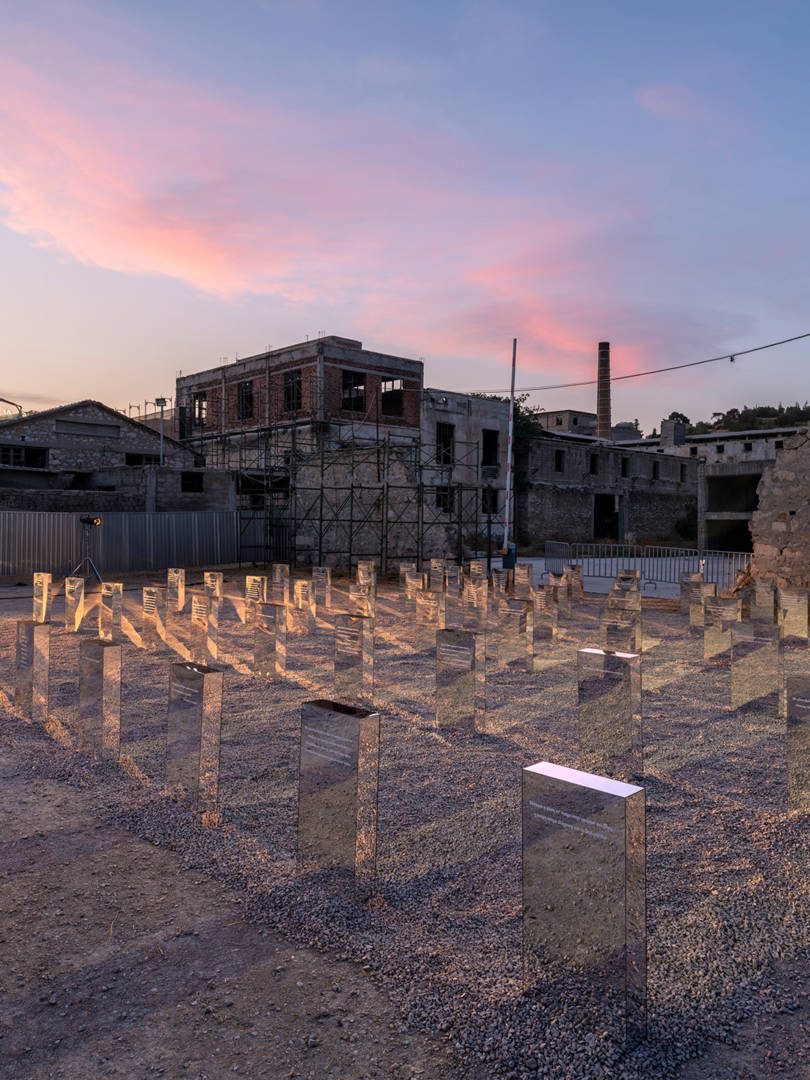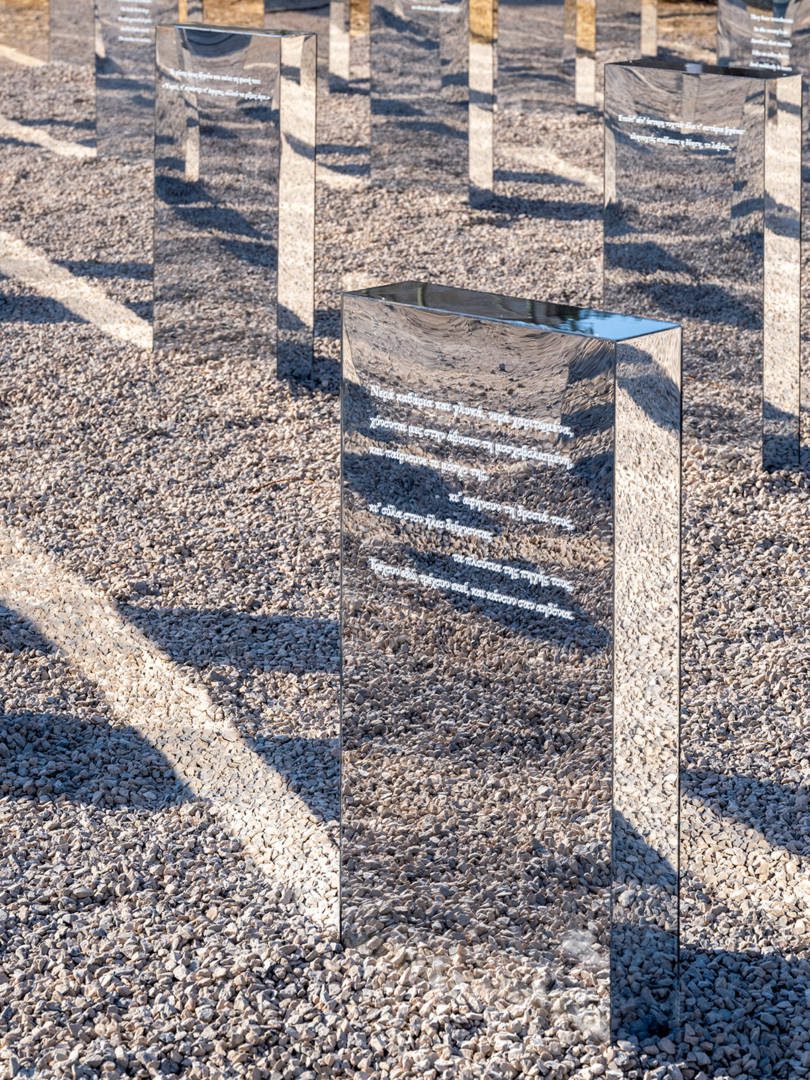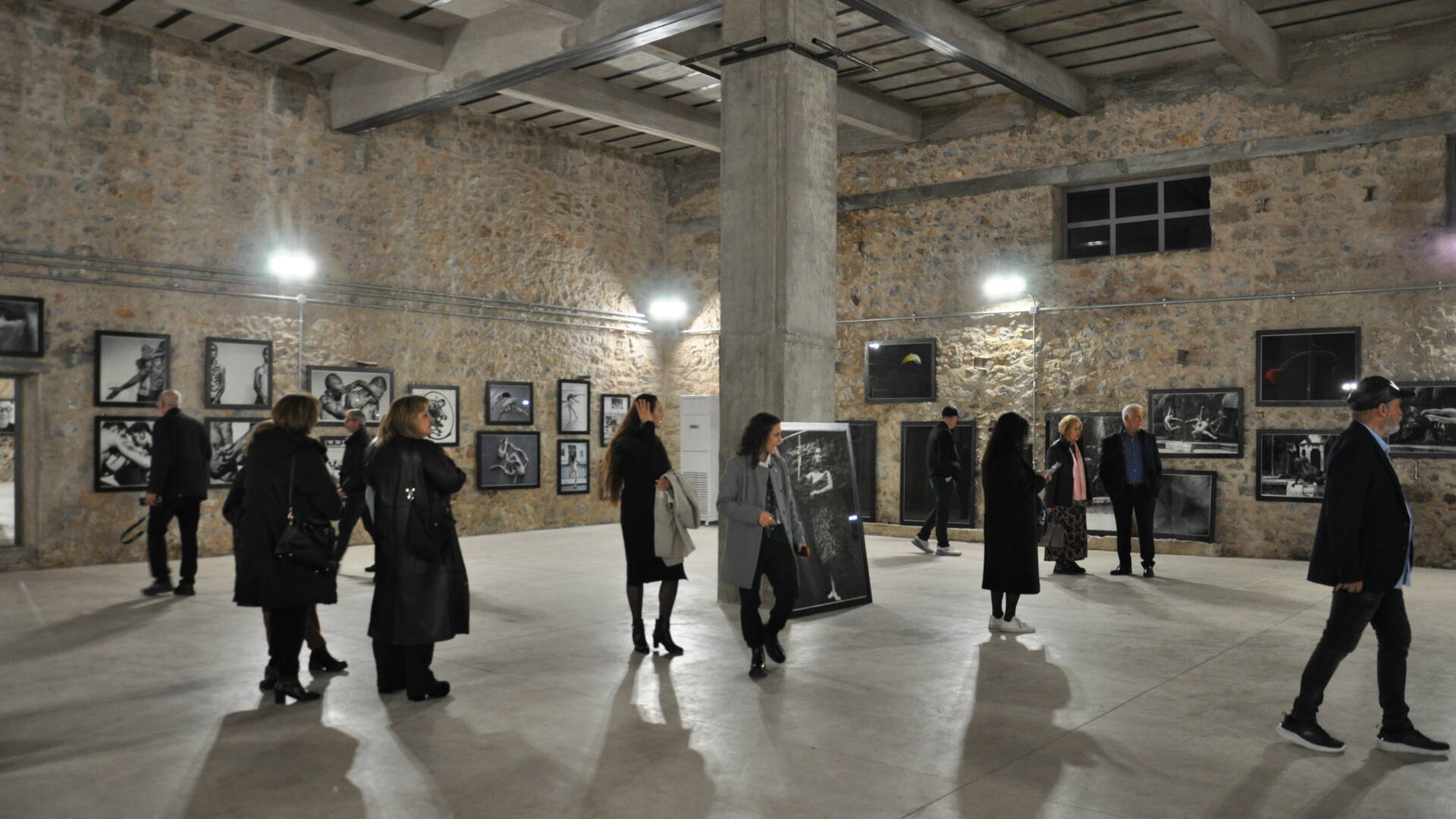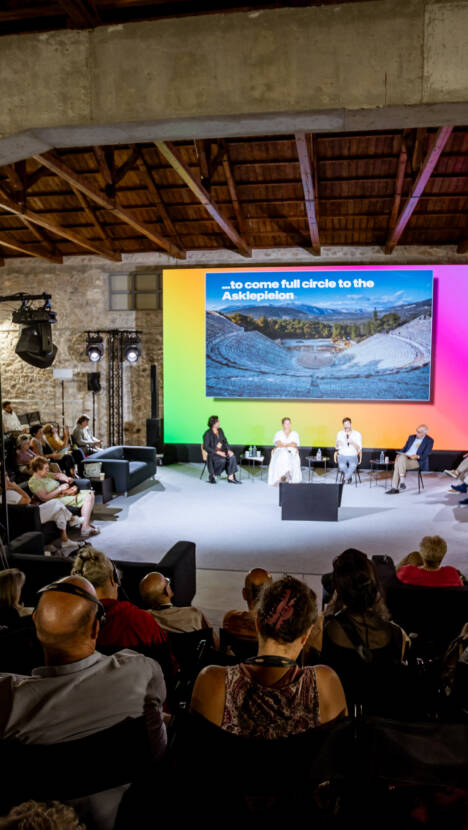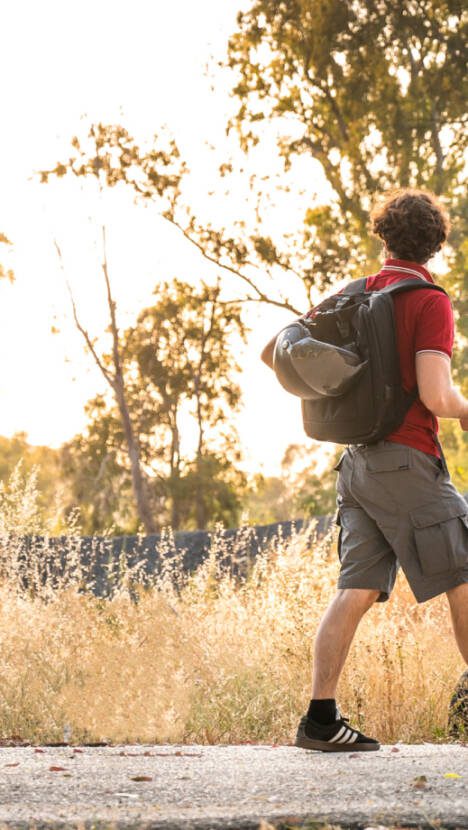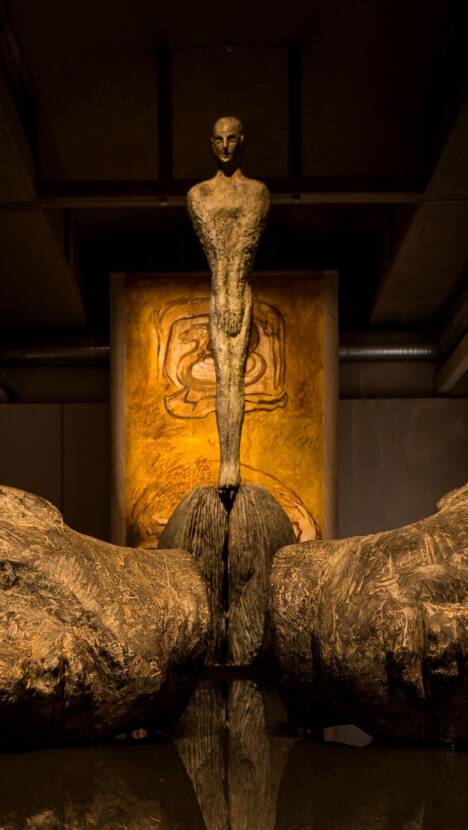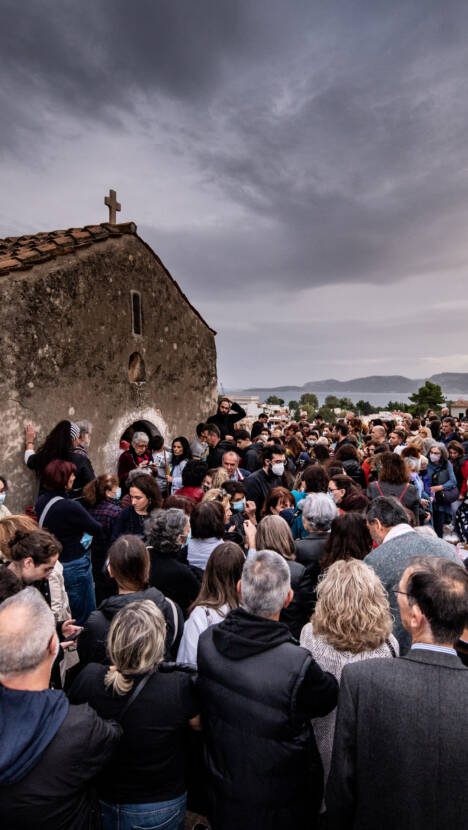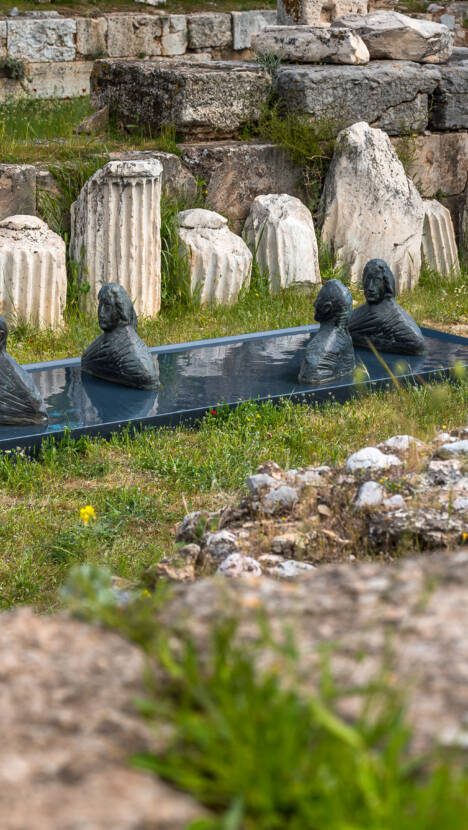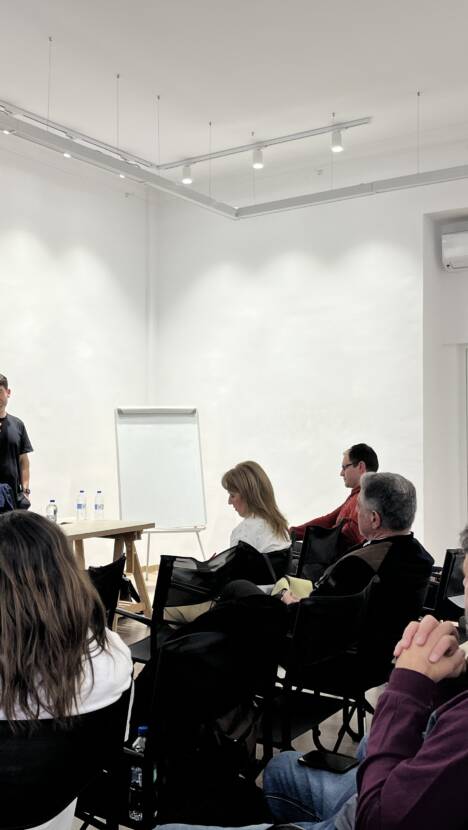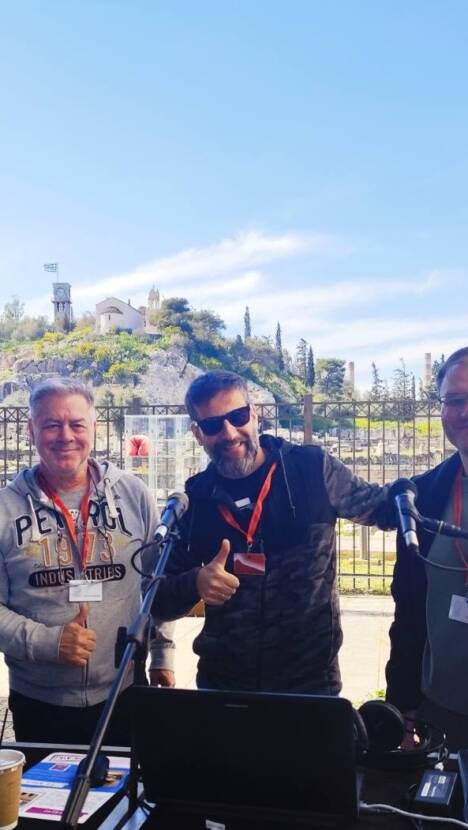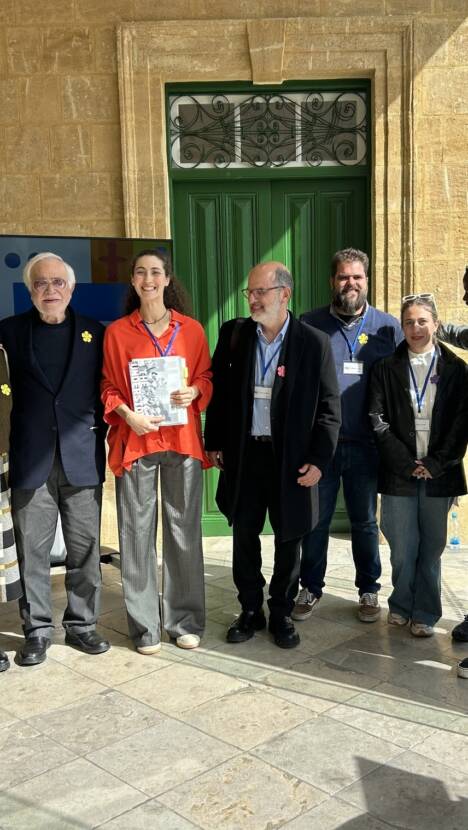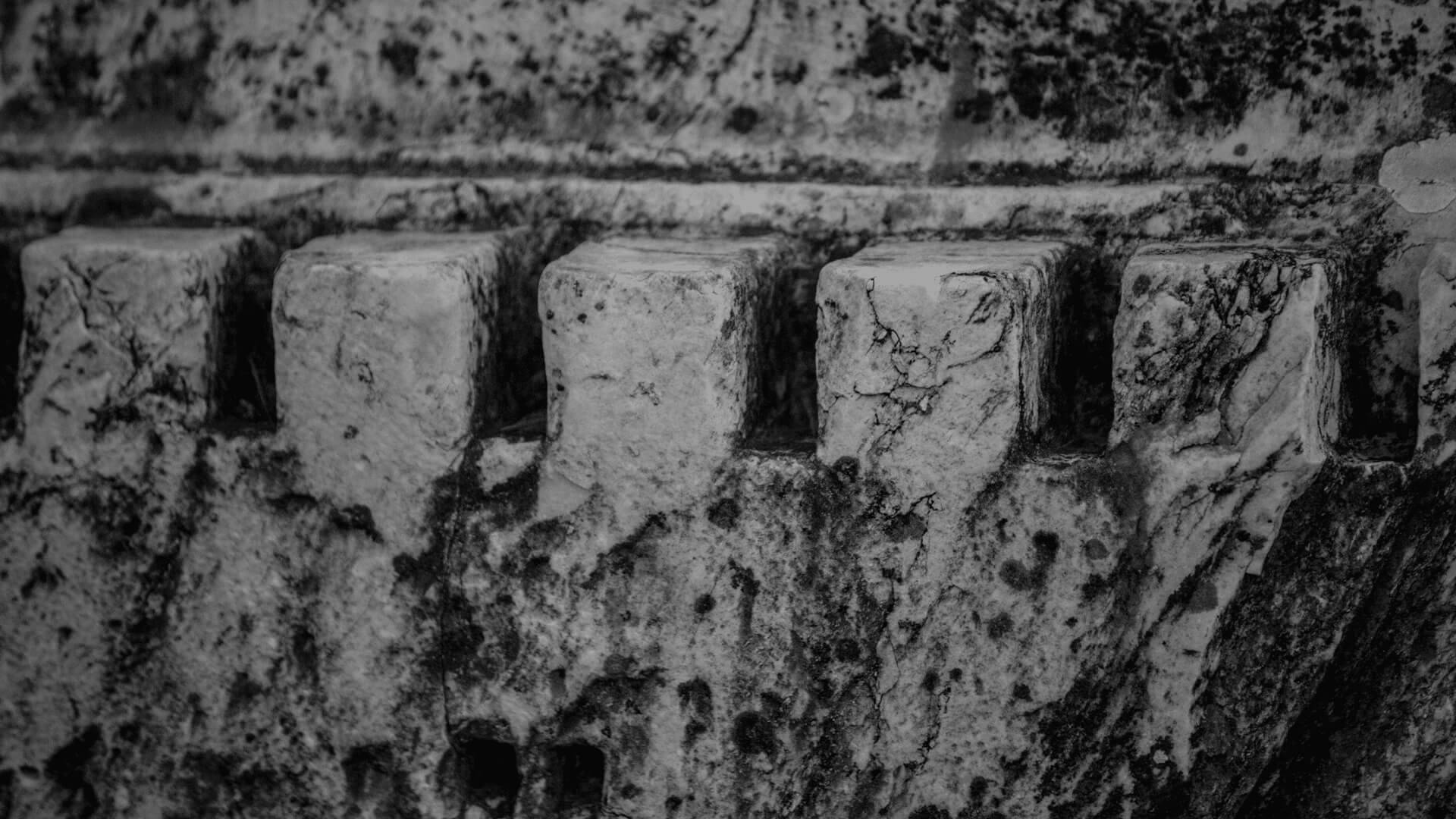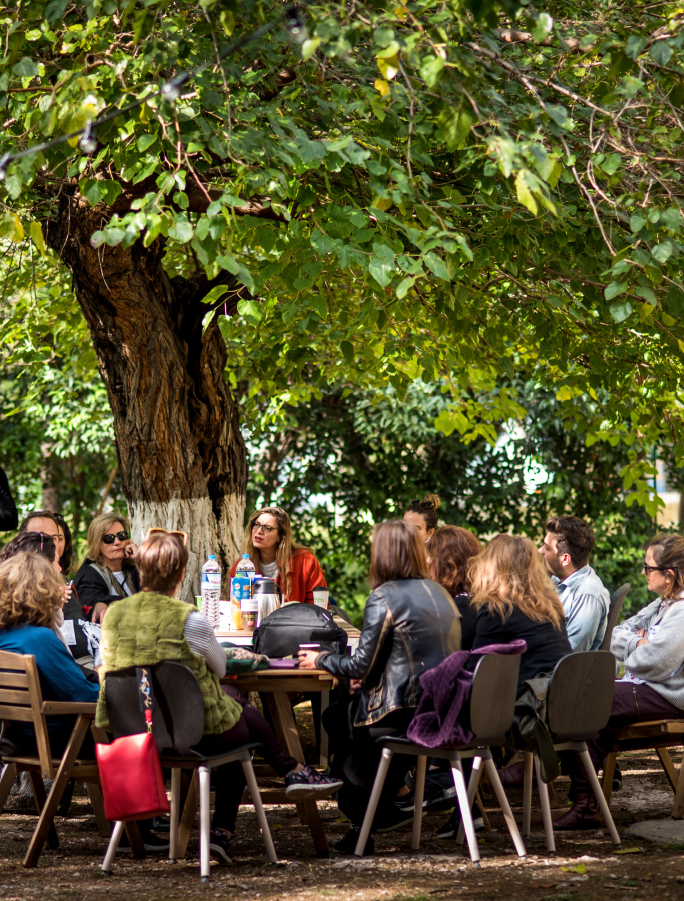2023 Eleusis European Capital of Culture is inaugurating the important narrative Exhibition, entitled “Eleusis & Revolution” on Friday, June 3 at the Parking of the Old Olive Mill.The historical exhibition, curated by Erato Koutsoudaki and scientifically curated by Stefanos Kavallierakis, with the valuable contribution of local history enthusiasts and collectors,is developed in two parts that interact and complement each other: the in situ art installation “Fragments” and the narrative historical installation “War Scene.”
The in situ art installation “Fragments” attempts to compose the traces of the performance “The Free Besieged” by Dionysios Solomos, directed by Eleni Efthymiou, presented in the exact same location, in June 2021. The verses used in the performance, interspersed on 60 mirror columns, alluding to a deployed military unit or a cemetery. By transporting the verses of Solomos’ painfully relevant poetic work through time and space, they offer visitors a rare opportunity to see themselves as besieged Mesolonghians and to reflect on their own reality, if life had placed them at that historical juncture. It is an important occasion for reflection on the dialectics of history, in the grim context of the current reality of war.
The narrative historical installation “War Scene” stands opposite the “Fragments,” inviting the audience to discover the relationship between Elefsina and the Greek Revolution of 1821. Located inside a war tent, abstractly reminiscent of the military headquarters of a 19th century chieftain, the narration places emphasis on locality. After all, the multiple layers of historiography comprising the history of Eleusis, the development of the greater region and its contribution to the 1821 Revolution constitute an individual chapter. Who were the local protagonists (the “minor heroes,” in Vasilis Panayiotopoulos’ words) that “established” history typically disregards? What were the parameters and individual aspects of the region that shaped the outcome of the events?
The content of the installation is based almost exclusively on the work and research of local history enthusiasts and collectors, introducing its visitors to rare archival material. Thanks to these special people, who are characterized by a deep love for their homeland and history, the installation is enriched with material that rarely reaches museum exhibitions. At the same time, the Exhibition places emphasis on the translocal, European and universal aspects, bringing to the foreground, not only the local and national protagonists, but also the role of the Europeans who came from every corner of the continent to contribute to the Greek Cause.

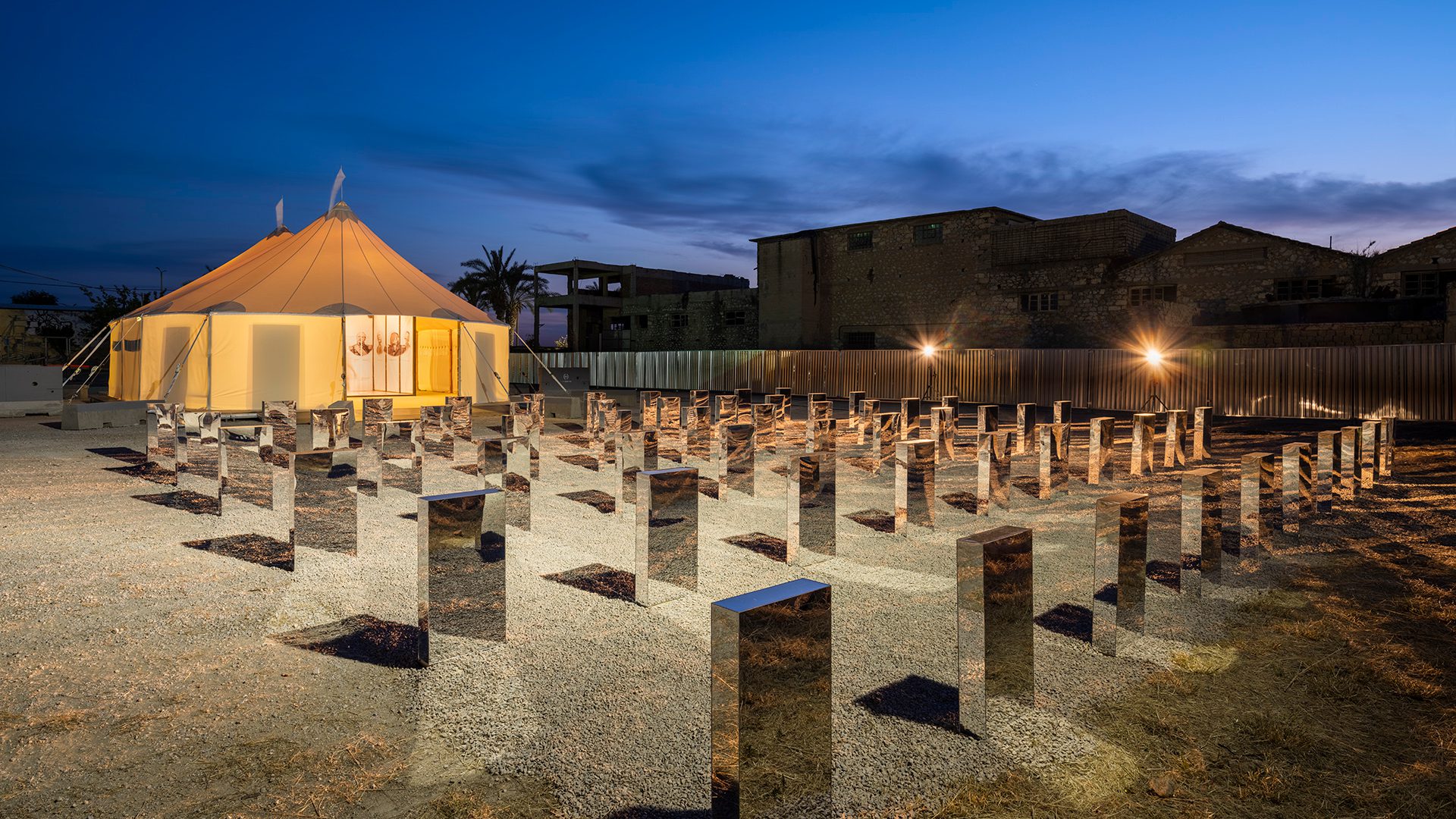
“In what way is Missolonghi associated with the military camp in Eleusis?”, one might wonder. With the establishment of the largest and most multitudinous organized Greek military camp led by Georgios Karaiskakis, as a stronghold in the struggle against the Turks in Central Greece and as an obstruction to the Kütahyan’s military action, 1826 marked the culmination. It is precisely this “camp” of the Exhibition that symbolizes the beginning and the end, as well as the dramatic years of this period, the “period of declice” of the Revolution following the invasion in the Peloponnese, the fall of Missolonghi and the lost battle in Athens, which resulted in the death of Georgios Karaiskakis. It is such “inexplicable” defeats that will eventually solidify the ultimate victory, having enabled the instrumental involvement of the “Great Powers” in the meantime.
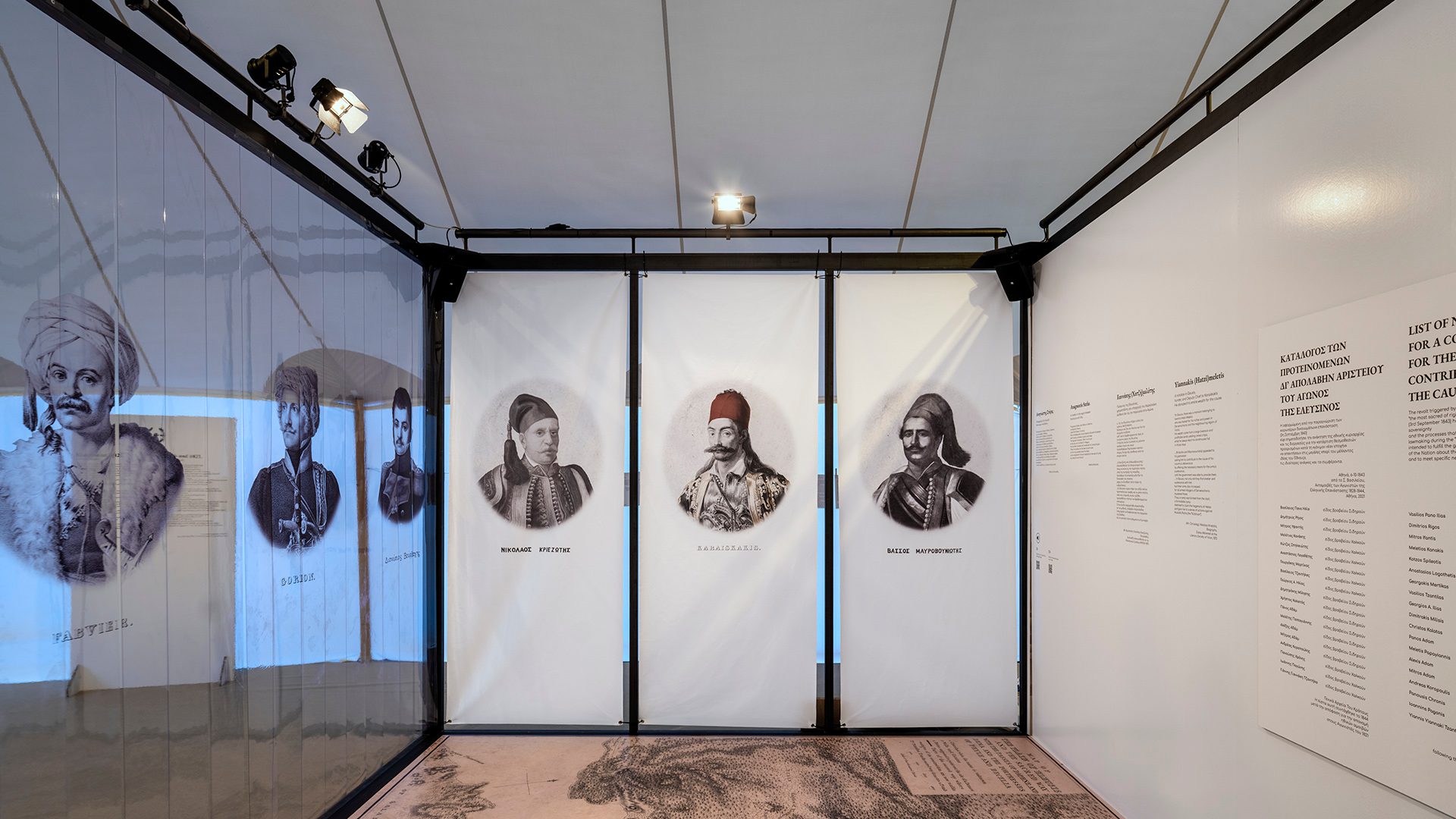
One year after its conception, the Exhibition “Eleusis & Revolution” poses an additional timely question: To what extent are essentially the parameters that determine every single war global and timeless?
Forming the second and third parts of the anniversary program of 2023 Eleusis European Capital of Culture for the celebration of 200 years from our National Rebirth, the two installation comprising the Exhibition “Eleusis & Revolution” are the continuation of the first, individual, action that was implemented in the same space in June, 2021: the performance “The Free Besieged,” directed by Eleni Efthymiou, a unique participatory experience, an example of the ECoC’s social sculpture program, with the contribution of the residents of Elefsina and the surrounding areas, and the participation of the Philharmonic Orchestra of the Municipality of Elefsina.
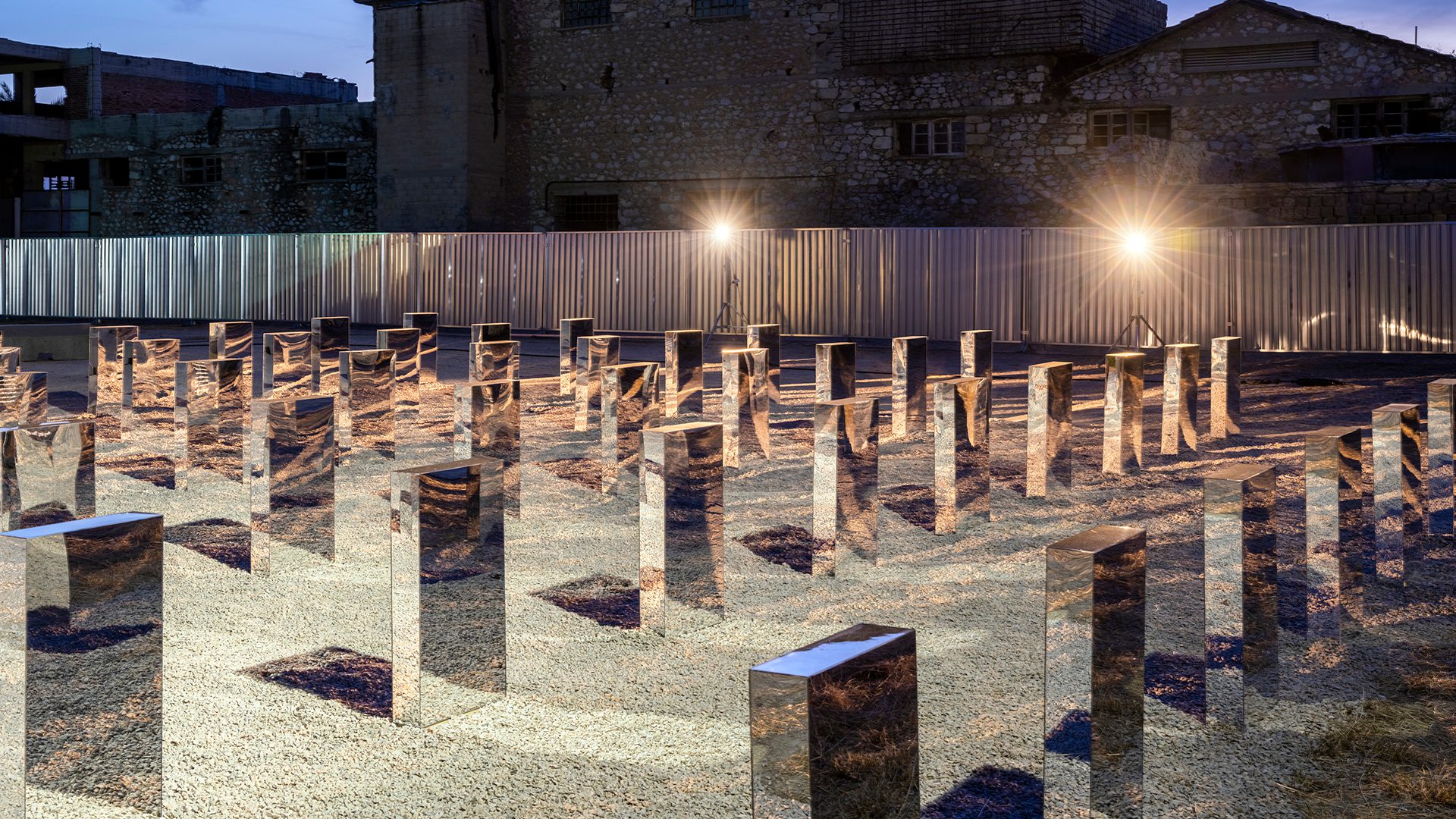
We wish to thank the Municipality of Elefsina, the Mayor Argyris Economou and especially the Deputy Mayors Leonidas Pappas and Fotis Tatakis, the Public Benefit Enterprise of the Municipality of Elefsina and specifically its President, Nikolaos Villiotis and Vice President Sofia Adam, as well as Manos Papageorgiou, Vicky Pasiopoulou, Olga Pavlaki, Ilias Rousis and Giannis Sideris.
Special thanks are also extended to the Eleusinian collectors Giorgos Pavlopoulos and Kostas Likidis, as well as the folklorist researcher Panagiotis Pestrovas, for the kind donation of material, and for their practical support. Further thanks to the BoD and the curators of the National Historical Museum for the kind permission to publish copies belonging to its collections. Lastly, we would like to sincerely thank Dimitris Giotas, Pantelis Boukalas, Peter Mackridge, Thanasis Moraitis, Dionysis Savvopoulos and all copyright and related rights holders who have contributed to the realization of the narrative installation by kindly providing access to their material.
